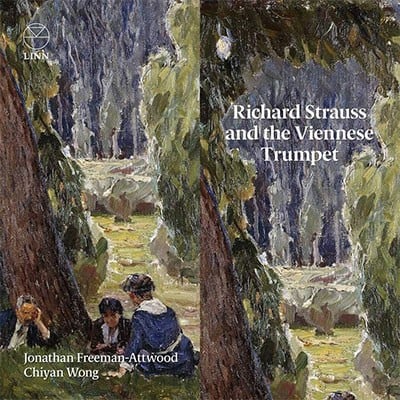Trumpet Sonata after Richard Strauss
(2018)Boosey & Hawkes
If there was ever a composer in the modern era from whom instrumentalists would hanker for a sonata or concerto, Richard Strauss would be amongst the top contenders. His wideranging orchestral and operatic creations bleed with gloriously idiomatic writing for every instrument, and yet only the piano, violin, clarinet (in tandem with the bassoon) oboe and horn can really claim to have bespoke solo works from Strauss’s seamlessly productive workshop from the 1880s to the late 1940s, and collectively they form only a small proportion of the composer’s output.
Our ‘Sonata after Richard Strauss’ differs significantly from a re-deployment of the composer’s music to another medium, as observed in various transcriptional practices of the last six-hundred years. Here we have two musicians spending five years figuring out how to make a significant concert piece which Strauss might have at least recognised. The primary aim was to fill the gaping chasm of ‘serious’ late-Romantic recital music for trumpet players, to be performed in toto as a sonata or as ‘drei konzertstück’.
The categories of engagement with Straussian material have been multi-dimensional, as readers will see. Because of the complex levels of creative collaboration between the two of us, we decided that individual operational distinctions were largely superfluous, save that one person thought up the idea and selected the majority of original pieces (a trumpet player) and the other (a composer) took material from a series of 30-40 practical sessions we undertook, and then wrote the material leading to a three-movement sonata. The pattern was fairly consistent: the pair would map out the structure together, and experiment practically (instruments in hand) with melodic characters and harmonic worlds, by drawing on a collective knowledge of Strauss’s oeuvre. The composer would then harness the results and develop the material before the pair reconvened to edit, refine and move onto the next section.
Holding considerable reservations with this kind of endeavour, we were conscious throughout that for this work to result in a convincing piece of music and not a mere academic exercise, we would need to think beyond a patchwork quilt of pastiche. Irrespective of what a pasticcio might sound like, it would inevitably lead to questions in terms of legitimacy, authenticity and artistic integrity. Similarly, simple transcriptions of existing material could never provide a cohesive extended form, nor a satisfying musical journey. We concurred that the clue to a successful piece lay in devising a balanced method, comprising an array of complementary processes. It ranged from re-using nearunaltered Strauss to composing entirely original material, the latter especially which required a fully-trained composer, one who would also possess passionate knowledge of the subject and the technical skills to manage Strauss's idiosyncratic musical language.
The material found in the Sonata is drawn from five different categories of provenance and treatment: i) near-untouched material taken directly from the first movement of Strauss's Violin Sonata, Op. 18, ii) light arrangement of material from diverse original sources (lieder or orchestral pieces), iii) very significant arrangement and re-deploying of other material for a radical new context or purpose, iv) newly composed sections, and v) development or transitions based on existing material within the Sonata itself (be it Strauss’s or newly composed).
The risk of ending up with a menu of unrelated musical gobbets without stylistic unity remained; the litmus test largely resides in whether or not listeners surprise themselves wondering what is truly by Strauss’s hand and what is not. If there is ambiguity of any kind, then we are likely to have achieved something of our goal.
Thomas Oehler and Jonathan Freeman-Attwood
Read the full article as a PDF.

Jonathan Freeman-Attwood/Chiyan Wong
Linn CKD621
Buy this CD from Amazon
